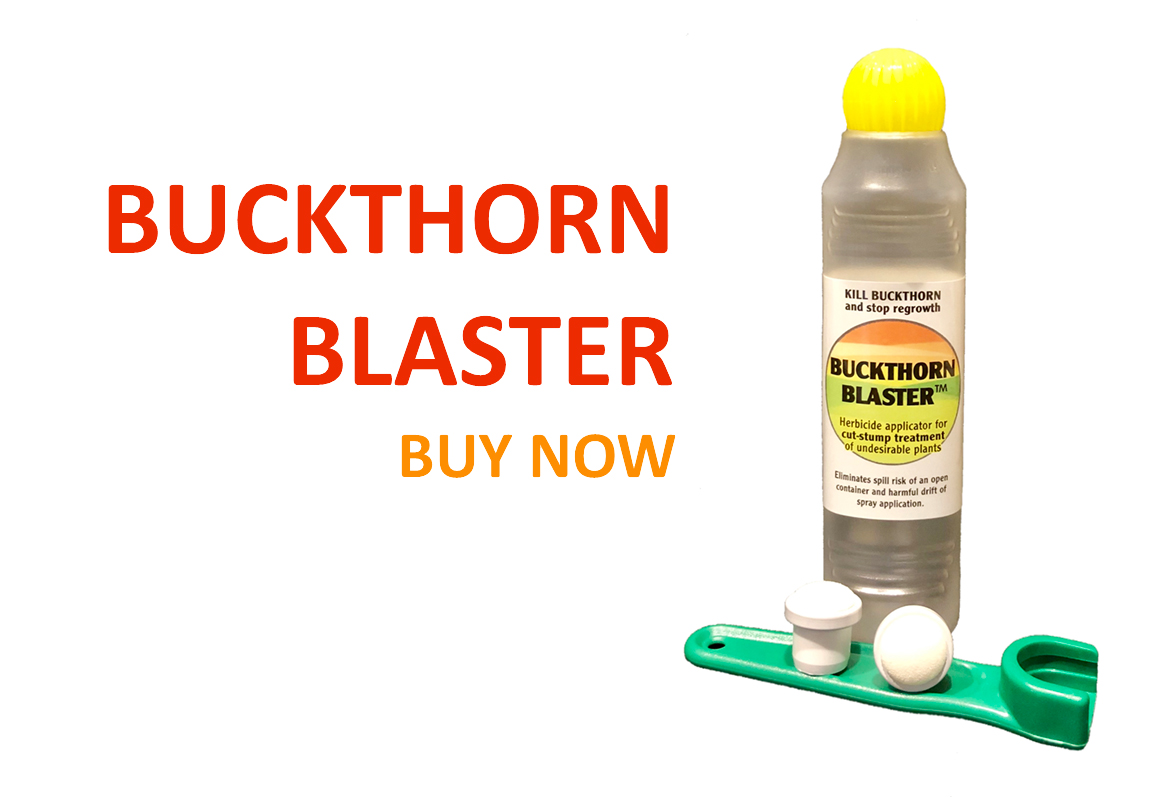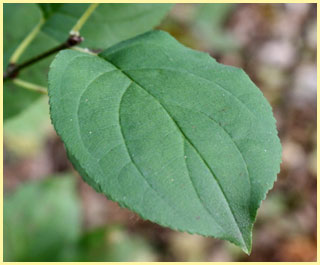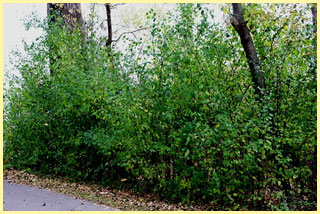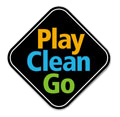| SEARCH |
Buckthorn
Article segments:
The Buckthorn Problem
Over thousands and thousands of years our native plants have adapted and evolved together in the unique climate, soil and environmental conditions of our region. In partnership with these native plant communities, insects, birds and mammals also adapted to the environmental conditions of our region creating a balanced ecosystem. Wildlife requires native plants for food, shelter and a reproductive environment. Every native species has significance in the continuance of a balanced ecosystem.When non-native invasive plants like buckthorn infest natural areas, they rapidly take over the space intended for native plants. Their infestation begins to deteriorate the entire ecosystem. Unless the alien invader is controlled or eradicated, a monoculture (single species) is established and creates a new environment that cannot sustain and support our native species. Without our intervention, extinction of species becomes the ultimate threat.
Here is the good news! When invasive plants are removed, recovery and restoration of the balanced ecosystem begins.
Why is Buckthorn Invasive in Our Region?
Natural predation by insects, herbivores and diseases slows and controls the growth of buckthorn in its native European habitat. In our region, buckthorn lacks any natural enemies. Buckthorn has a longer growing season leafing out earlier in spring and retaining leaves later into fall*. Buckthorn’s increased growing season provides an unfair advantage over native trees and shrubs
As the infestation of buckthorn takes over it forms a dense canopy of shade robbing sunlight, soil nutrients and water from native plants. Without access to these critical resources, native plants struggle to survive and eventually disappear. Insects, birds and other wildlife must relocate or risk death.
*NOTE: Fall is a great time to spot buckthorn when few, if any, native plants retain green leaves.
Buckthorn’s History
Buckthorn arrived in North America by way of New York in the mid-1800s along with immigrant European settlers. These settlers brought along and planted buckthorn for its ability to form desirable hedges. They were completely unaware of the environmental damage that would result from their actions.
The two non-native invasive species of buckthorn that plague our natural areas are common European buckthorn (Rhamnus carthartica) and glossy buckthorn (Frangula alnus). In Minnesota, the only native species of buckthorn is Alder-leaved buckthorn (Rhamnus alnifolia). It is primarily found north of Anoka County and its characteristics bear no resemblance to non-native invasive buckthorn.
ID information for non-native buckthorn can be found at the Minnesota DNR web site: http://www.dnr.state.mn.us/invasives/terrestrialplants/woody/buckthorn/index.html or www.buckthornblaster.com
How to Remove and Chemically Treat Buckthorn – Cut-Stump Method
Cut-stump method is a simple and effective treatment option to stop buckthorn growth. The advantages of cut-stump buckthorn treatment when completed with a wick applicator, foam craft brush or Buckthorn BlasterTM include:
- Low risk of non-target chemical damage
- Up to 100% effective against buckthorn survival and regrowth
- Less expense and more efficient compared to other control options
1. To begin cut-stump treatment of buckthorn, cut the buckthorn stem as close to ground level as possible without damaging your equipment. This provides the double benefit of placing herbicide close to the root structure for most effective results and avoiding a future tripping hazard.
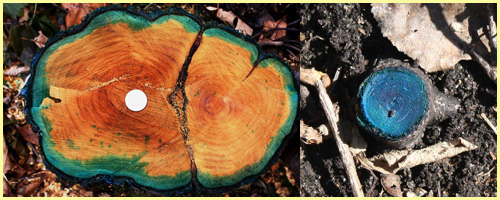 2. Apply an 18-20% concentration of glyphosate* (i.e. the active ingredient in RoundUp Concentrate Plus) directly to the cambium layer at the outer perimeter of each freshly cut stump using a brush type applicator or the Buckthorn BlasterTM. See photo examples of a large stump and a small twig:
2. Apply an 18-20% concentration of glyphosate* (i.e. the active ingredient in RoundUp Concentrate Plus) directly to the cambium layer at the outer perimeter of each freshly cut stump using a brush type applicator or the Buckthorn BlasterTM. See photo examples of a large stump and a small twig:
Buckthorn stump at left is over 12′ across but only the outer cambium layer requires herbicide treatment with cut-stump method. Buckthorn at right is so small it will be completely covered. Blue marking dye provides an invaluable visual aid to avoid missed stumps.
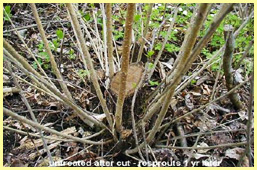 Buckthorn stump cuts that are not immediately treated will result in significant re-sprouting (see photo at right from River Bend Nature Center, Faribault, MN). If herbicide treatment is not feasible at the time of cutting, leave a tall enough section of trunk remaining to make a second cut at a later time when herbicide treatment can be completed.
Buckthorn stump cuts that are not immediately treated will result in significant re-sprouting (see photo at right from River Bend Nature Center, Faribault, MN). If herbicide treatment is not feasible at the time of cutting, leave a tall enough section of trunk remaining to make a second cut at a later time when herbicide treatment can be completed.
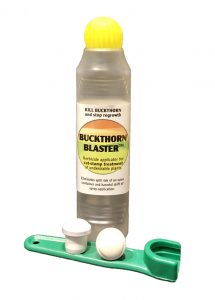
The Buckthorn BlasterTM is a 4-oz., hand-held herbicide applicator with a foam applicator tip (*herbicide is not included – may be ordered separately). As pressure is applied between the cut stump and foam applicator tip, herbicide is released. No toxic spray to inhale, no drift onto non-targeted plants and no accidental spillage from an open herbicide container. Go to www.landscape-restoration.com for ordering information.
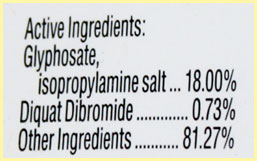 *Glyphosate is a non-selective herbicide and the active ingredient in RoundUp Concentrate Plus and similar generically labeled glyphosate products. The concentration of 18-20% glyphosate is deemed effective for successful cut-stump herbicide treatment of buckthorn, invasive honeysuckle, Canada thistle and other unwanted species having a durable stem. The active ingredient and concentration of your herbicide should be located on the bottom right corner on the front of the manufacturer’s product label.
*Glyphosate is a non-selective herbicide and the active ingredient in RoundUp Concentrate Plus and similar generically labeled glyphosate products. The concentration of 18-20% glyphosate is deemed effective for successful cut-stump herbicide treatment of buckthorn, invasive honeysuckle, Canada thistle and other unwanted species having a durable stem. The active ingredient and concentration of your herbicide should be located on the bottom right corner on the front of the manufacturer’s product label.
Before applying any herbicide, always read and follow the manufacturer’s label directions and safety precautions.
Minnesota state law requires that any applicator hired to apply herbicide to a customer’s property be commercially licensed and carry their license on their person.
This is for environmental protection and the protection of property and individuals. Please report violators to the MN Department of Agriculture at 651-201-6333.
Prioritizing Buckthorn Removal
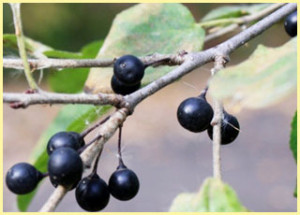 Remove buckthorn plants with berries first.
Remove buckthorn plants with berries first.
Berries are produced on female buckthorn plants as they reach maturity. Each buckthorn berry contains 3 – 4 seeds which will remain viable in the soil for up to 5 years and longer. By removing female plants with berries, future seed production is stopped – a critical step in controlling buckthorn.- Remove buckthorn closely surrounding valued native plants.
Native tree seedlings, saplings and shrubs and herbaceous plants like spring ephemerals are of high value in restoring a woodland habitat. Remove the buckthorn closely surrounding these plants so they will be “released” from competition. These desirable plants will form the future native understory of your healthy woodland. Become familiar with the identification of native species or contact a native species plant expert such as Landscape Restoration, Inc. for assistance. - Remove remaining buckthorn in phases beginning with the largest buckthorn first.
Removing all buckthorn at one time creates a favorable environment for new invasives like garlic mustard (Alliaria petiolata) to establish. A phased approach allows the woodland to adjust to an increased amount of sunlight. Shade from remaining buckthorn will slow the spread of invasive species. This phased approach makes early detection and control more manageable.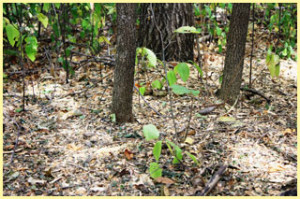
- Continue to monitor the restoration site over time and remove non-native invasive species as they appear.
Garlic mustard frequently appears after buckthorn removal. Garlic mustard is a prohibited noxious weed in Minnesota, and considerably more devastating than buckthorn. Learn to identify garlic mustard and monitor the restoration site with regularity. Early detection and intervention are the most effective means to control garlic mustard. - Mulching.
Chip buckthorn back into the woodland whenever feasible. This extra layer of mulch promotes woodland health and inhibits germination of invasive seeds.
